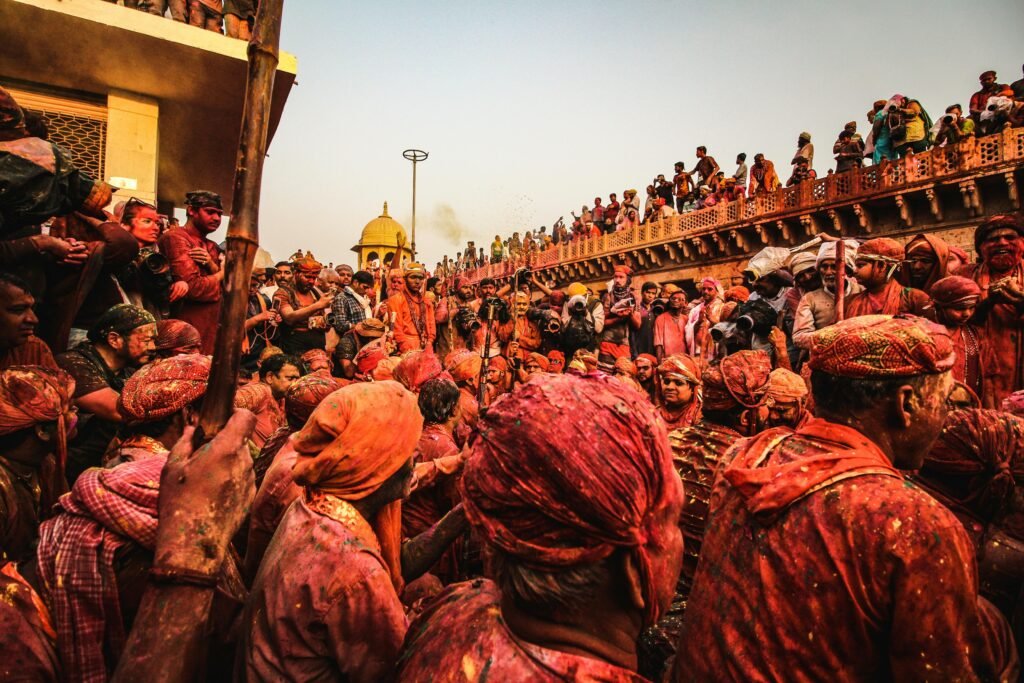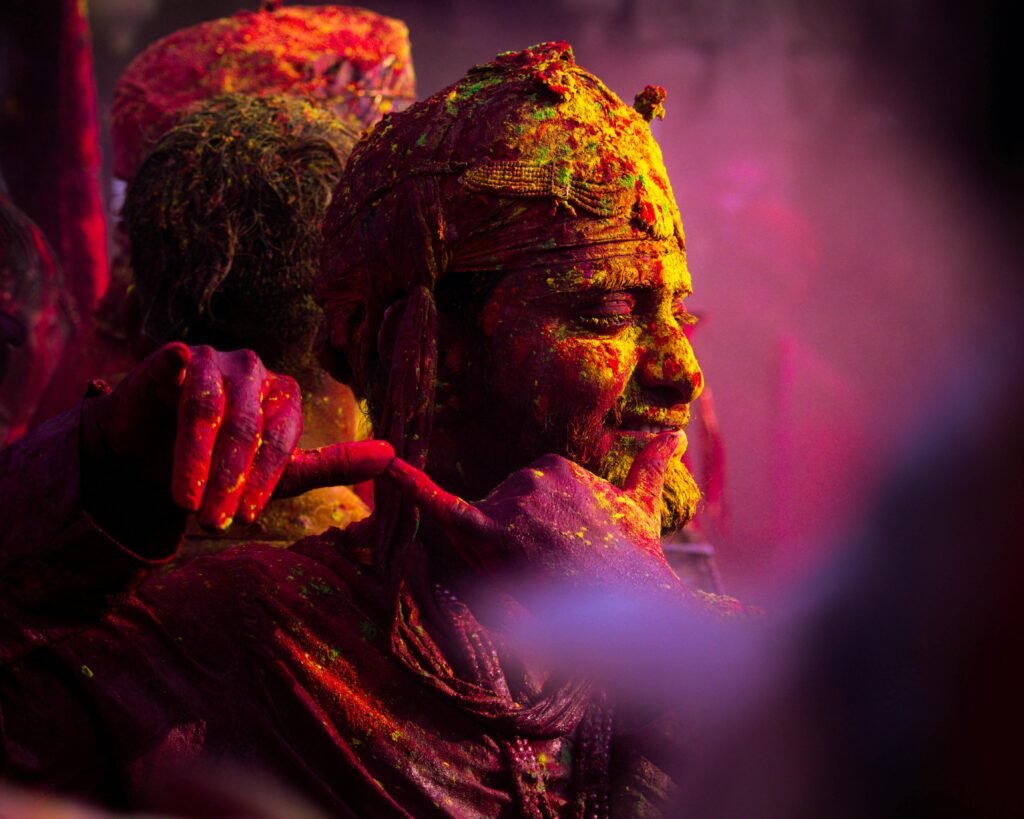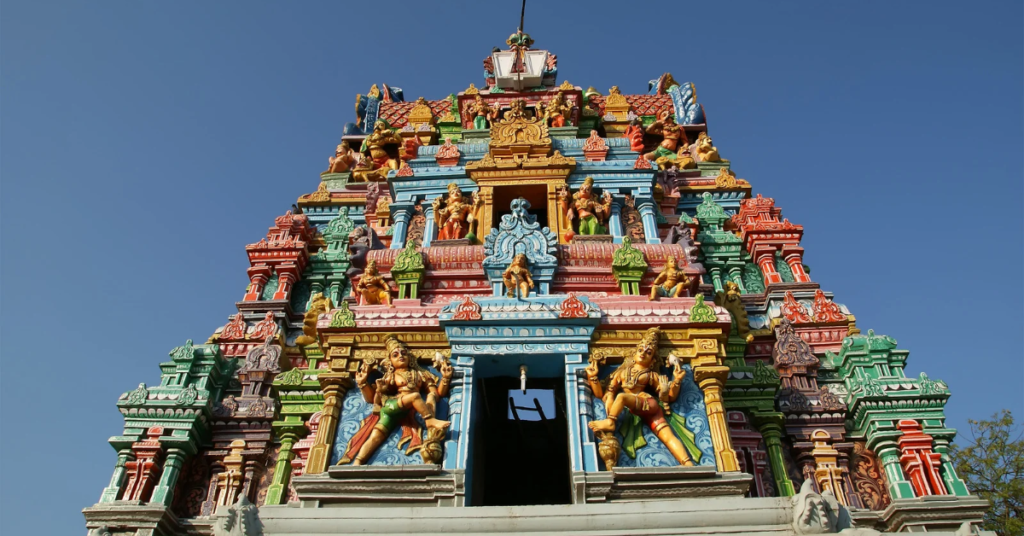
Introduction
Visiting a temple is more than just a ritual; it’s a journey to connect with the divine. Preparing for a temple visit ensures that you experience this sacred space with devotion and reverence. In Hinduism, temples are not just places of worship but the earthly abodes of deities. Every temple carries an energy that helps you seek blessings, inner peace, and spiritual growth.
Hindu scriptures say that stepping into a temple cleanses your mind and soul. According to ancient texts, temple architecture follows Vastu Shastra, designed to channel cosmic energy. It is believed that visiting a temple in the early morning amplifies positive vibrations, bringing peace and clarity. Legends say that Lord Rama prayed at Rameswaram Temple before crossing the ocean, showing the importance of seeking divine guidance before major life events.
When you prepare well, your temple visit becomes more meaningful. Wearing the right attire, carrying the right offerings, and following the right rituals enhance your spiritual experience. Whether you are a first-time visitor or a regular devotee, knowing temple customs helps you show proper respect.
In this guide, we will explore what to carry, how to behave, and the rituals to follow for a fulfilling temple visit.
Understanding Temple Etiquette and Reverence
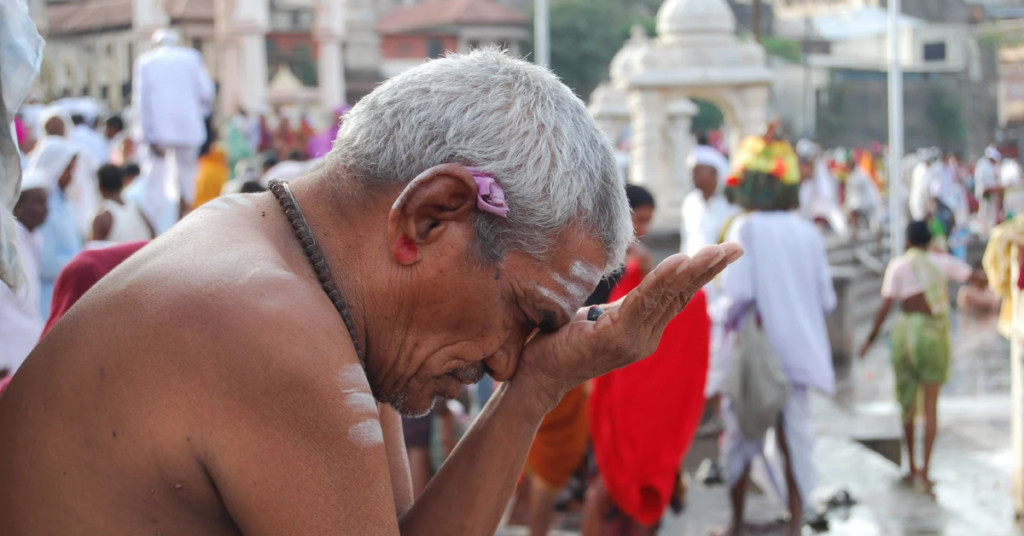
When preparing for a temple visit, following proper etiquette helps you connect with the divine and show respect for sacred traditions. Every temple has its own customs, but some rules remain universal.
Dress Code: What to Wear
Temples are spiritual spaces, so wearing modest and traditional attire is recommended. Men usually wear kurta-pajama or dhoti, while women prefer sarees or salwar kameez. Many South Indian temples require men to enter bare-chested with a dhoti. Avoid shorts, sleeveless tops, or tight clothing. In temples like the Jagannath Temple in Puri, devotees must follow a strict dress code before entering. Dressing respectfully ensures you blend in with the spiritual atmosphere.
Behavior: Silence, Shoes, and Phones
Temples are places of peace, so maintaining silence is essential. Loud conversations disturb the sanctity of the space. Before entering, remove your shoes, as they symbolize worldly impurities. Most temples have designated areas for footwear. Mobile phones should be switched off or kept on silent mode. In some temples, photography is strictly prohibited to maintain the sacred energy of the space.
Greeting Deities: Namaste and Prostration
When you stand before the deity, join your palms in Namaste as a sign of devotion. Some devotees bow fully in sashtang pranam (prostration) to express complete surrender. In South Indian temples, devotees touch their forehead to the floor as a mark of humility. It is believed that greeting deities with sincerity invites divine blessings into your life.
By respecting these customs, you ensure a spiritually fulfilling temple visit.
Essential Items to Carry for a Temple Visit
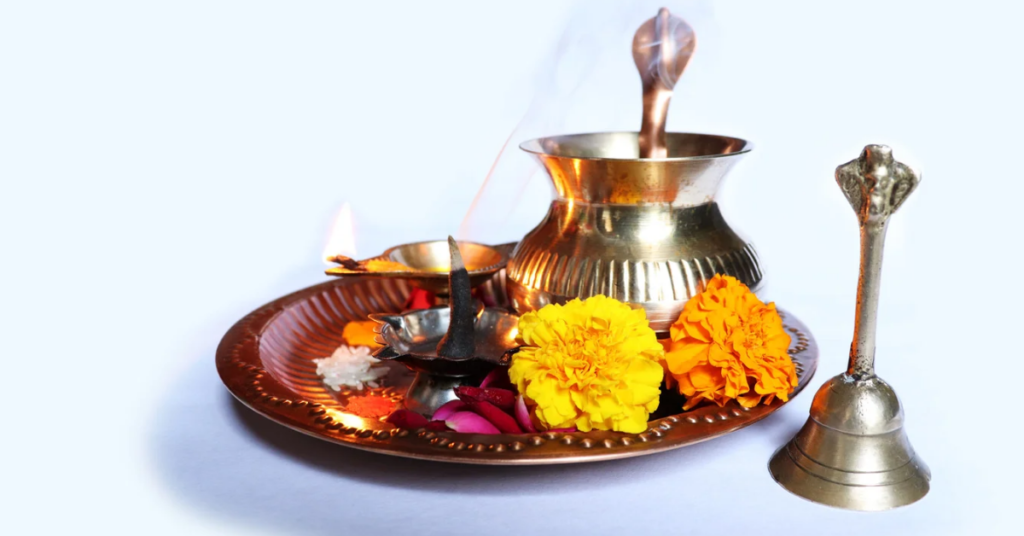
When preparing for a temple visit, carrying the right items enhances your spiritual experience. Offerings symbolize devotion and gratitude to the deity.
Puja Thali – A Sacred Offering
A well-prepared puja thali carries all the essentials—diyas, fresh flowers, incense sticks, kumkum, and sandalwood paste. Diyas represent the removal of darkness, while incense purifies the surroundings. In many temples, devotees offer fresh marigolds and lotus flowers, as these are believed to please the gods. Legends say Goddess Lakshmi loves red lotus flowers, and offering them brings prosperity.
Fruits, Sweets, and Prasad
Temples have a long tradition of bhog (food offerings) to deities. You can carry bananas, coconuts, or homemade sweets like laddoos. Many devotees offer panchamrit—a mix of milk, honey, yogurt, ghee, and sugar—believed to purify the soul. The offered food becomes prasad, which is later distributed as divine blessings. In temples like Tirupati, the famous laddu prasad is considered sacred.
Donations – A Gesture of Gratitude
Most temples accept donations for maintenance and community services. Whether you contribute money, grains, or clothes, giving with a pure heart multiplies blessings. In ancient times, kings donated gold and land to temples, ensuring their prosperity. Even a small offering today helps preserve these spiritual spaces.
Carrying these simple items makes your temple visit more meaningful and fulfilling.
Rituals to Follow Before Entering the Temple
When preparing for a temple visit, following certain rituals helps purify your mind and body before stepping into the sacred space. Bathing before a temple visit is a common practice, as it symbolizes inner and outer cleanliness. In ancient times, devotees bathed in temple ponds before entering, believing the water carried divine energy. Wearing fresh, modest clothing is also essential to maintain the sanctity of the temple.
Mental preparation is just as important as physical cleansing. Many devotees meditate or chant mantras before leaving home to create a peaceful mindset. Some observe a short fast, believing it increases spiritual focus. In Hindu epics, sages often fasted before visiting temples to receive divine blessings.
As you enter, ringing the temple bell marks your arrival and clears distractions from the mind. Scriptures say the vibration of the bell awakens spiritual energy. It is believed that Goddess Lakshmi resides in the sound, bringing peace and prosperity. Read the blog , to learn more about Temple Etiquettes.
Understanding Temple Offerings and Their Significance

When preparing for a temple visit, knowing the meaning behind various offerings makes the experience more meaningful. In Hinduism, offerings symbolize devotion and gratitude. Flowers, coconuts, fruits, and sweets are some of the most common gifts presented to the deity. Flowers, especially marigolds, represent purity, while coconuts are believed to carry the impurities of the devotee. Offering a coconut is seen as breaking the ego, symbolizing the surrender of oneself to the divine.
Prasad, the food offered to the deity, is often considered sacred. Fruits like bananas and mangoes are popular offerings because they signify fertility and prosperity. When you offer prasad, it is believed to be imbued with the deity’s blessings, and receiving it in return is thought to bring you divine grace. In temples like Tirupati, the famous laddu prasad is highly revered.
Presenting offerings respectfully is essential. Always place your offerings on the temple’s altar with reverence, ensuring they are fresh and clean. When presenting the offering to the priest, bow your head as a sign of respect. After the rituals, the priest will offer you prasad, which you receive with both hands, showing gratitude for the divine blessings. This sacred exchange fosters a deep spiritual connection during your temple visit.
Dos and Don’ts During a Temple Visit
When preparing for a temple visit, it’s important to follow the temple’s customs and respect its sanctity. One of the first rules is about touching deities and sacred objects. It is considered disrespectful to touch idols or sacred offerings directly. In some temples, you may be allowed to touch the deity’s feet or receive blessings, but always with reverence. According to legends, when Lord Rama was in exile, he did not touch the idols of the deities in the forest to maintain their purity.
Photography is another area where etiquette is crucial. Many temples prohibit photography to preserve the sacredness of the space. The flash of a camera can disturb the peaceful atmosphere and distract others. In places like Varanasi, where pilgrims come for spiritual immersion, photography is often banned. Always ask for permission before taking photos, and avoid sharing sacred moments on social media unless explicitly allowed.
Respecting temple timings is also essential. Many temples have specific hours for darshan (viewing the deity), prayer services, and rituals. Arriving early in the morning is considered auspicious, as it is believed the temple is at its most peaceful and spiritually charged. By following these dos and don’ts, you show respect and ensure a truly enriching temple visit.
Spiritual Benefits of a Temple Visit
When preparing for a temple visit, it’s not just about following rituals—it’s about nurturing your inner peace and devotion. Temples are places where the mind can disconnect from the chaos of daily life and reconnect with the divine. The serene environment, the chanting of mantras, and the aroma of incense help calm the mind. It’s said that simply stepping into a temple can purify your thoughts and emotions, creating a sense of tranquility.
Connecting with the divine is a central part of a temple visit. The temple is believed to be the abode of the gods, and through prayer and meditation, you can experience a deeper spiritual connection. It’s similar to how Lord Krishna urged Arjuna to seek divine wisdom in the Bhagavad Gita. By offering your prayers and intentions, you invite divine grace and blessings into your life.
Another powerful aspect of temple visits is participating in communal worship. Temples are hubs for spiritual communities, where devotees come together in unity to chant, pray, and offer their devotion. This shared experience strengthens your sense of belonging and reminds you that you are part of something much greater. Just as thousands gather at the Kumbh Mela for collective worship, the collective energy of the temple makes the experience even more uplifting. These visits provide not only individual spiritual growth but also a sense of communal peace.
Conclusion
As you reflect on preparing for a temple visit, remember that it’s a journey of both physical and spiritual growth. Temples are sacred spaces designed to help you connect with the divine and deepen your devotion. From understanding the importance of offerings to following temple etiquette, every step in your preparation enhances the spiritual experience. By dressing appropriately, maintaining silence, and offering respect, you create an environment conducive to inner peace and connection.
During your visit, don’t forget to approach the experience with sincerity and humility. Whether it’s the simple act of ringing the temple bell or the deeper practice of meditation, every moment is a chance to align yourself with divine energy. Hindu legends emphasize that devotion, not the material offering, is what truly pleases the gods. Remember the story of King Dushyanta, who won the blessings of Sage Kanva not with riches, but with genuine devotion.
Lastly, always carry an open heart and mind. Temple visits are not just about following rituals—they are about engaging in a spiritual journey. If you’re looking for more ways to explore devotion, consider using the Divyakripa app, which offers resources to enhance your spiritual practices and temple visits.
A temple visit is a chance to pause, reflect, and invite divine grace into your life. Approach it with reverence and see how it transforms your spiritual journey.

